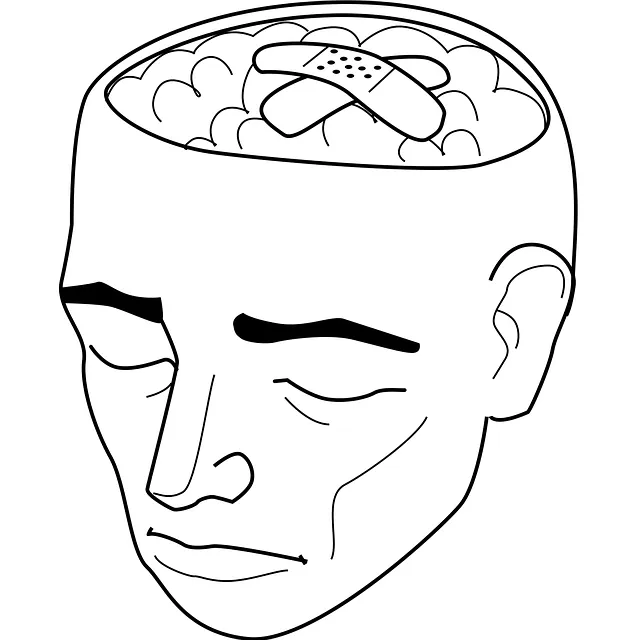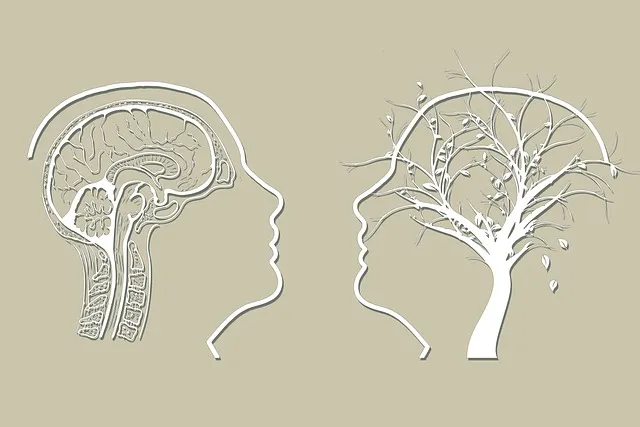The Kaiser Permanente behavioral health center in Lone Tree offers a holistic mental wellness program focusing on prevention and early intervention using Mind Over Matter principles. Evaluating this program involves setting clear goals, combining qualitative (interviews, focus groups) and quantitative (surveys, data analysis) assessment methods to capture diverse mental wellness aspects. Stakeholder engagement is crucial for gathering unique perspectives from clients, families, healthcare professionals, and community partners. Clear outcomes with regular tracking ensure continuous improvement, fostering a healthier environment for patients and staff through tailored strategies based on gathered insights.
Mental wellness program evaluations are pivotal for measuring effectiveness and driving improvement. This article explores a structured approach using the Kaiser Permanente Behavioral Health Center Lone Tree Model as a framework. We delve into key components, including qualitative and quantitative assessment methods, stakeholder engagement, and outcome measurement strategies. By integrating these techniques, organizations can effectively evaluate and enhance their mental wellness programs, ensuring they meet the evolving needs of individuals seeking support.
- Understanding the Kaiser Permanente Behavioral Health Center Lone Tree Model
- Key Components of a Comprehensive Mental Wellness Program Evaluation
- Qualitative vs Quantitative Assessment Techniques: A Balanced Approach
- Stakeholder Engagement and Feedback Collection Methods
- Measuring Success: Defining and Tracking Outcomes for Continuous Improvement
Understanding the Kaiser Permanente Behavioral Health Center Lone Tree Model

The Kaiser Permanente Behavioral Health Center Lone Tree Model is a comprehensive approach to mental wellness that emphasizes prevention and early intervention. This model is grounded in the Mind Over Matter Principles, focusing on empowering individuals to take control of their mental health through various proactive strategies. The program offers tailored support for diverse populations, addressing not only common mental health challenges like depression but also targeting stress management, anxiety reduction, and overall resilience building.
One key component is the Mental Wellness Journaling Exercise Guidance, encouraging participants to reflect on their thoughts, emotions, and behaviors. This practice fosters self-awareness and provides a space for individuals to track their progress over time. By combining evidence-based practices with personalized guidance, the Lone Tree Model aims to create lasting positive changes, ensuring better mental health outcomes and improved quality of life for its participants.
Key Components of a Comprehensive Mental Wellness Program Evaluation

A comprehensive evaluation of mental wellness programs is essential to ensure their effectiveness and adaptability to diverse needs, much like the services provided at a Kaiser Permanente behavioral health center in Lone Tree. The process should encompass several key components to gain a holistic understanding of the program’s impact. Firstly, it involves defining clear goals and objectives that align with the program’s design, focusing on areas such as emotional healing processes, self-esteem improvement, and fostering resilience through mind over matter principles. These goals provide a framework for measuring success and identifying areas that require adjustment.
Secondly, the evaluation should incorporate diverse assessment methods to capture the multifaceted nature of mental wellness. This includes quantitative measures like surveys and data analysis to track progress, as well as qualitative techniques such as interviews and focus groups, which offer valuable insights into participants’ experiences and perceptions. By integrating these components, evaluators can comprehensively assess not only individual outcomes but also the program’s overall contribution to enhancing community mental wellness, much like a vibrant tapestry woven with various threads of support and healing.
Qualitative vs Quantitative Assessment Techniques: A Balanced Approach

At the Kaiser Permanente behavioral health center Lone Tree, a comprehensive mental wellness program evaluation necessitates a balanced blend of both qualitative and quantitative assessment techniques. While quantitative methods like surveys and statistical analyses offer objective data on program impact, they often miss the nuanced nuances of individual experiences. Qualitative approaches, such as interviews and focus groups, delve deeper into participants’ emotional healing processes, resilience building, and anxiety relief, providing rich insights that quantitatively measured outcomes may not capture.
This dual strategy allows for a more holistic understanding of the program’s effectiveness. Quantitative data can highlight trends and overall improvements in mental health metrics, while qualitative data sheds light on the emotional and psychological transformations experienced by individuals. Integrating both approaches ensures a well-rounded evaluation that not only measures success at a population level but also recognizes the unique journeys of those engaging with the Kaiser Permanente behavioral health center Lone Tree’s programs.
Stakeholder Engagement and Feedback Collection Methods

Effective mental wellness program evaluation requires stakeholder engagement and diverse feedback collection methods to ensure comprehensive insights. At the Kaiser Permanente behavioral health center in Lone Tree, this involves actively involving a range of key stakeholders, including clients, family members, healthcare professionals, and community partners. These groups offer unique perspectives that enrich the evaluation process.
One crucial method is conducting focus groups and interviews with participants to gather qualitative feedback on their experiences. This allows for an in-depth understanding of how the program impacts their mental health journey, particularly regarding stress management and mood management. Additionally, surveys distributed among a broader stakeholder network provide quantitative data on program effectiveness and identify areas for improvement, fostering empathy building strategies within the organization.
Measuring Success: Defining and Tracking Outcomes for Continuous Improvement

Measuring success is a critical aspect of evaluating any mental wellness program, especially at healthcare institutions like the Kaiser Permanente behavioral health center in Lone Tree. Defining clear outcomes and tracking them over time enables continuous improvement, ensuring that programs remain effective and tailored to the needs of the population served. This process involves identifying specific, measurable goals related to various aspects of mental wellness, such as reduced symptoms of anxiety or depression, improved self-esteem (Self-Esteem Improvement), enhanced coping mechanisms, and increased job satisfaction among healthcare providers.
Regular assessment tools and surveys can be employed to gather data on these outcomes. For example, the Burnout Prevention Strategies for Healthcare Providers may include structured interviews or questionnaires that gauge empathy levels, patient interactions, and overall work satisfaction. These data points provide valuable insights into program effectiveness and help identify areas where adjustments can be made. By consistently monitoring and analyzing these outcomes, the Kaiser Permanente behavioral health center in Lone Tree can continuously refine its mental wellness programs, fostering a healthier and more supportive environment for both patients and healthcare providers alike.
The evaluation of mental wellness programs is a multifaceted process that requires a blend of qualitative and quantitative methods, as highlighted by the Kaiser Permanente Behavioral Health Center Lone Tree model. This comprehensive approach ensures that all aspects of program effectiveness are considered, from participant satisfaction to clinical outcomes. By engaging stakeholders and collecting diverse feedback, organizations can gain valuable insights for continuous improvement, ultimately enhancing the quality of mental health services provided. Incorporating these evaluation techniques allows for a more nuanced understanding of program success, aligning with the goals of the Kaiser Permanente Lone Tree initiative.






